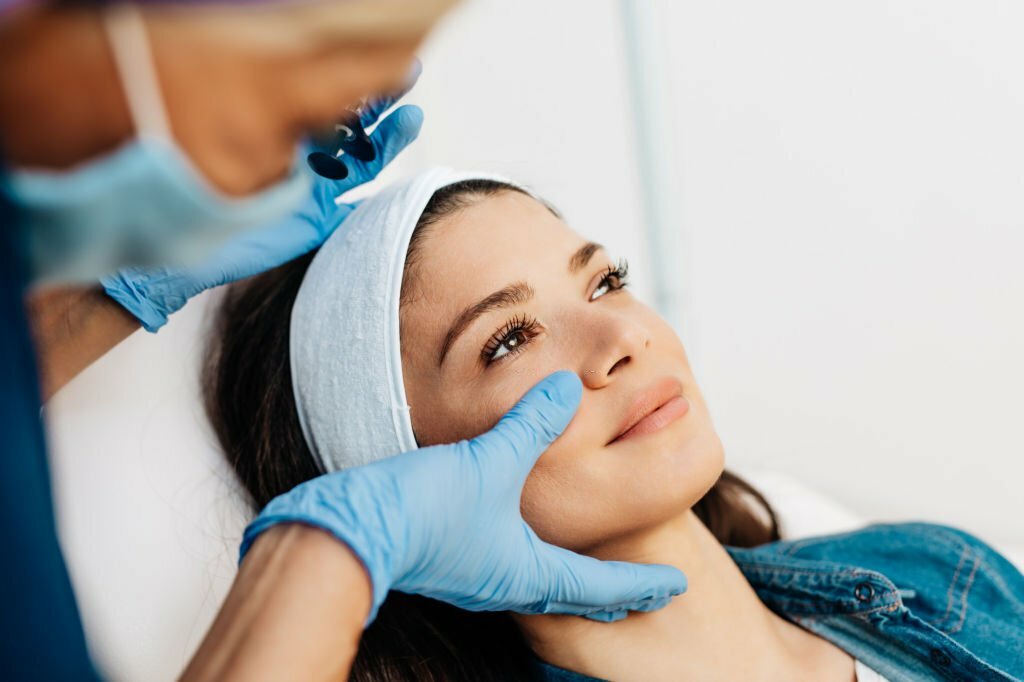
A medical esthetician is a professional dedicated to enhancing a patient's physical appearance, primarily through skin treatments. They are closely linked to the field of dermatology. Unlike many medical roles, formal medical training is usually not required for these positions.
These professionals often operate in medical environments, including hospitals or private practices. Still, they can also be found in various clinics or medical spas.
What Does A Medical Esthetician Do?
Medical estheticians carry out a range of procedures and services to safeguard or enhance a patient's skin. The process usually begins with a consultation, where the esthetician meets with the client or patient to discuss their skincare requirements.
During this consultation, they assess the patient's skin and offer a suggested skincare routine and additional skincare advice. Estheticians may also recommend or sell skincare products tailored to patients' needs.
Following the consultation, medical estheticians may proceed to perform various procedures on patients, including:
- Microdermabrasion
- Waxing and chemical hair removal
- Chemical peels
- Facials
- Laser skin rejuvenation
- Light therapy
What Is The Average Salary For A Medical Esthetician?
A medical esthetician can get $52,446 as the average salary. However, this figure varies based on location, experience, education, and employer type. Here are the salary percentiles for medical estheticians in the United States:
- 10th Percentile: $42,718
- 25th Percentile: $47,354
- 50th Percentile (Median): $52,446
- 75th Percentile: $60,209
- 90th Percentile: $67,276
In addition to their salary, medical estheticians may receive various benefits, including 401(k), health insurance, paid time off, and employee discounts.
How To Become A Medical Esthetician In 6 Steps
1. Check The State Requirements
Explore the licensing criteria in the state where you plan to practice master esthetics. Each state has different requirements for estheticians. While all 50 states provide regular esthetician licenses, only a handful offer master ones.
In certain states, instead of master esthetician licenses, there are advanced or upgraded esthetician licenses available. These states typically offer specialized training programs for specific master esthetics techniques, like tattoo removal or microdermabrasion.
Upon completing these programs successfully, candidates can qualify to upgrade their esthetician license.
2. Decide On Your Career Path
Select your path to becoming a master esthetician. Some choose to start by training, obtaining their esthetician license, and gaining experience in the field. Alternatively, others opt to undergo training for both standard and master estheticians concurrently and then apply directly for their master or advanced esthetician license.
3. Complete Your Esthetics Training
Get trained in either master esthetician practices or both standard and master esthetician practices. The mandatory training hours for master estheticians differ from state to state, so check your state's requirements before enrolling in an esthetics training program.
Esthetics training covers both theoretical knowledge and practical hands-on skills essential for estheticians. The courses you attend during your esthetician training vary based on factors like whether you are simultaneously pursuing standard and master esthetician training. Topics covered in esthetics training may include:
- Advanced manicures and pedicures
- Ingredients in skin care products and their health benefits
- Skin aging signs and techniques
- Medical terms
- Advanced facial treatments, such as hydrating, pore cleansing, and ultrasound facial treatments
- Immune systems
- Anatomy, including muscles, nerves, cells, and veins
- Health care laws
- Hair removal
- Plastic surgeries
- Chemistry
- Skin disorders
- Hormones
- Biochemistry
- Hygiene, sanitation, and disinfection practices
- Histology, or the study of small human tissues
- Medical charts
- Chemical peel methods
Consider pursuing master esthetician training even if your state doesn't provide a specific license. Having master esthetics classes or certificates on your resume can enhance your career prospects. This training may open doors to more advanced or higher-paying esthetician positions.
4. Find An Esthetician Apprenticeship
In certain states, licensed master estheticians may need to fulfill apprenticeship requirements. Apprenticeships may substitute for some or all of your esthetics training. Your apprentice master must receive formal recognition from your state's board of cosmetology.
5. Take The Test
Finish the examinations necessary for master's or advanced esthetician licensure. Typically, aspiring master estheticians undergo both a written and a practical exam. The written tests cover scientific knowledge and procedural techniques relevant to master esthetics.
Practical exams demand candidates to showcase various techniques on a person or a mannequin. During the practical exam, aspiring master estheticians should exhibit their hands-on skills and understanding of proper safety and hygiene protocols.
6. Apply For License
Submit your applicationfor master's or advanced licensure. The required documentation, paperwork, and fees for master estheticians differ by state. In certain states, an official from your master esthetician training program may need to verify that you have met all the education requirements. Follow your state's specific guidelines for a smooth application process.
FAQs
Where do medical estheticians work?
Medical estheticians can work in a wide range of medical facilities, including dermatologist and oncologist offices. Some also work for plastic surgeons and specialty surgeons. Many medical estheticians work with patients in hospitals, while others find jobs at restorative treatment centers.
